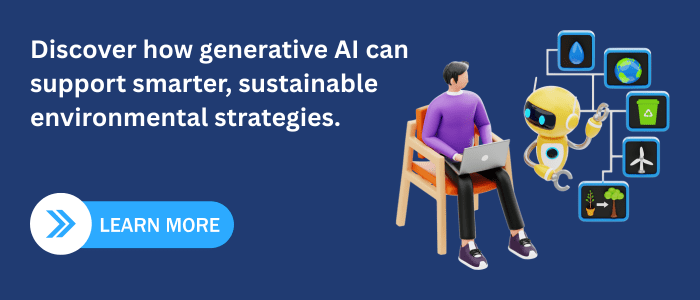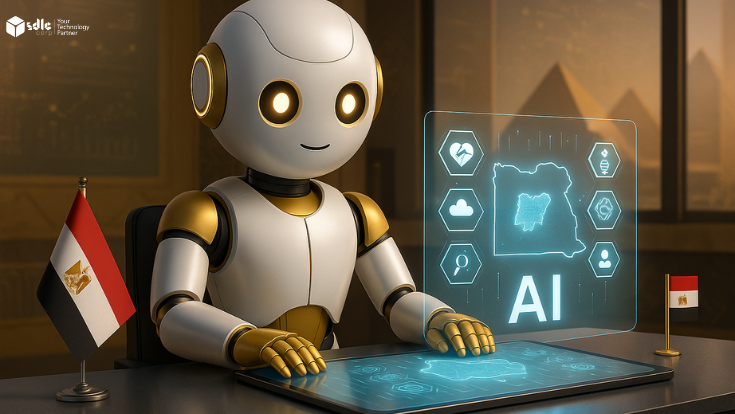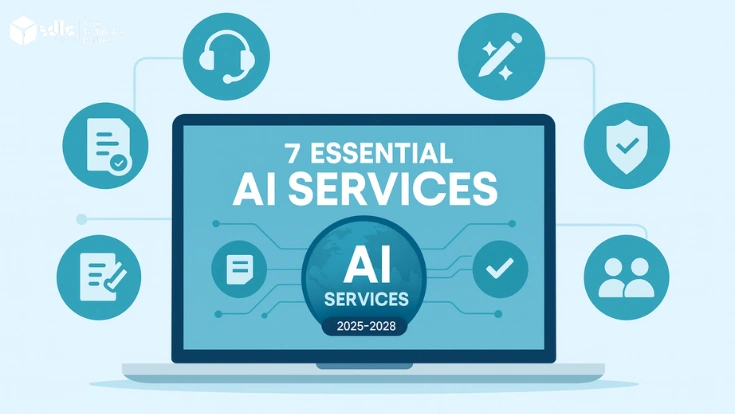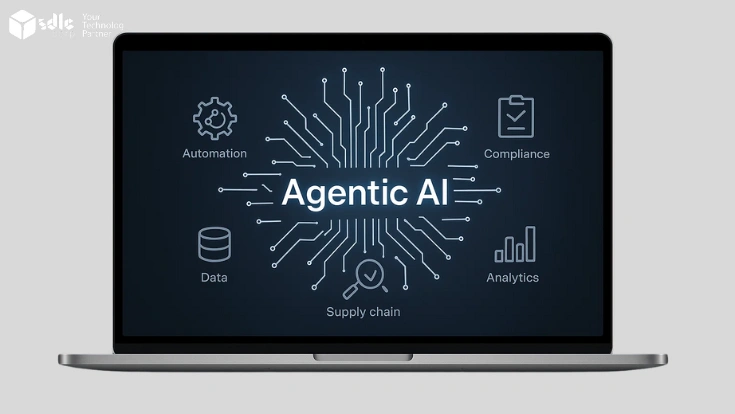Introduction
Environmental management faces complex challenges: climate change, biodiversity loss, pollution, and resource scarcity. Traditional monitoring and modeling methods are valuable but often limited by data availability, speed, and cost. Generative AI, a class of artificial intelligence that creates new data and scenarios, offers a transformative approach to these problems.
This technology can simulate environmental conditions, generate plausible future scenarios, and help decision-makers act with greater confidence. Organizations exploring these solutions may consider Generative AI Development Services to design systems tailored to environmental applications. Yet, it also carries environmental and ethical implications that must be addressed.
Understanding Generative AI’s Role
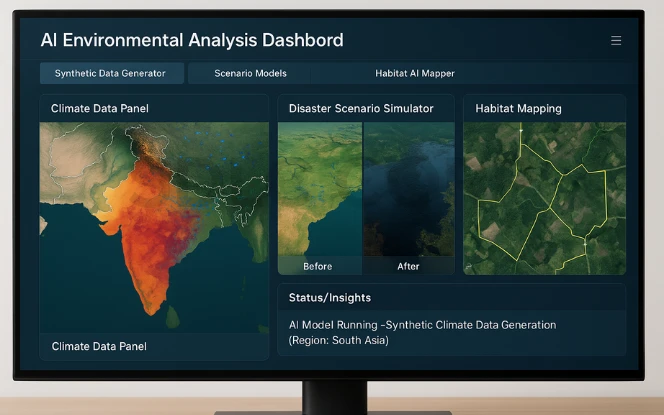
Generative AI differs from conventional predictive AI. While predictive systems forecast based on past patterns, generative models create entirely new, yet plausible, data based on learned patterns. In environmental management, this means:
- Creating synthetic climate data for under-observed regions.
- Simulating disaster scenarios to stress-test response plans.
- Generating habitat maps in areas with limited surveys.
Because environmental systems are complex and dynamic, generative AI’s ability to fill data gaps and explore “what-if” scenarios is especially valuable.
Key Applications in Environmental Management
Climate Modeling and Scenario Simulation
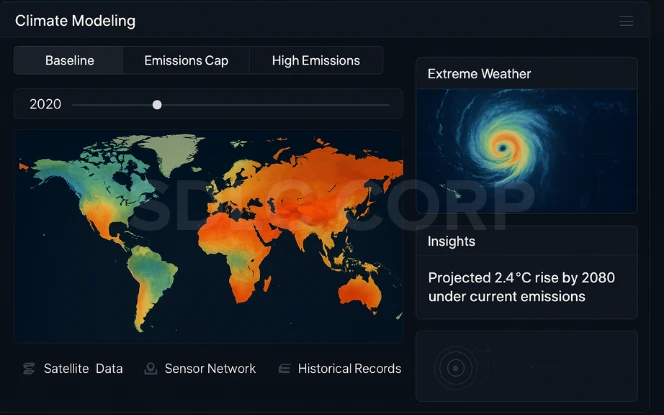
Generative AI enhances climate modeling by integrating diverse datasets—satellite imagery, sensor readings, and historical climate records—into unified models. These models can:
- Simulate decades-long climate trends.
- Test the effects of policy interventions, like emissions caps.
- Explore extreme weather patterns under various warming scenarios.
Biodiversity and Habitat Mapping

Using generative models with drone and satellite imagery, conservationists can:
- Map ecosystems at high resolution.
- Track changes in vegetation cover.
- Predict the spread of invasive species.
This helps direct conservation resources to areas at highest risk.
Disaster Preparedness and Response
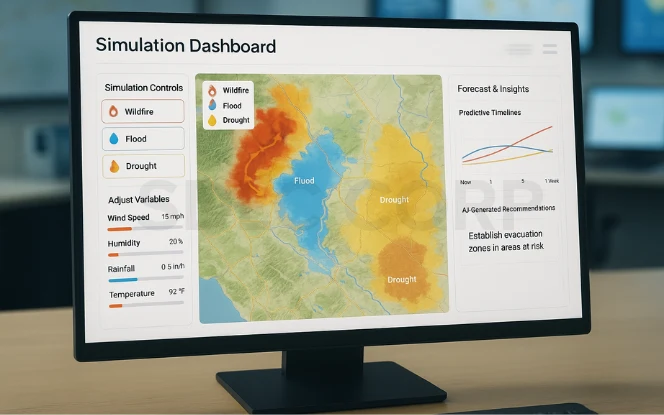
Generative AI can simulate disasters before they occur, allowing agencies to prepare:
- Wildfires: Simulating fire spread under changing wind and humidity.
- Floods: Modeling inundation patterns in urban and rural areas.
- Droughts: Forecasting water stress zones months in advance.
Pollution and Emissions Tracking
Satellite imagery and IoT sensors feed AI systems that detect and quantify pollutants. For example:
- Methane emission detection via generative analysis of satellite data.
- Tracking urban air quality changes in near real-time.
Resource Management
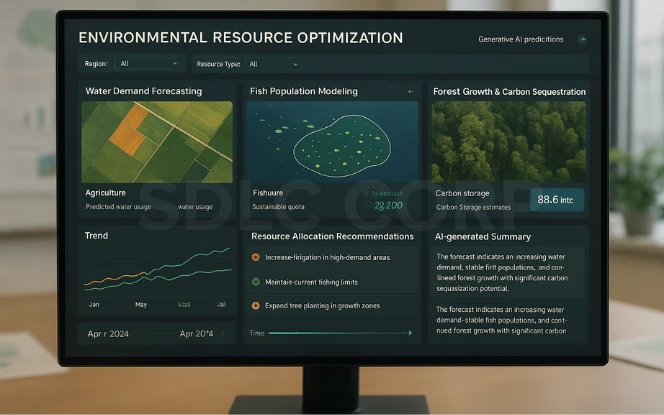
Generative AI can optimize resource allocation:
- Predicting water demand in agriculture.
- Modeling fish populations for sustainable fishing quotas.
- Forecasting forest growth and carbon sequestration potential.
Technical Approaches

Generative AI for environmental management typically uses:
- GANs (Generative Adversarial Networks) for realistic image synthesis, such as land-use change maps.
- Diffusion models for scenario generation, producing multiple plausible environmental outcomes.
- Transformer architectures for integrating multimodal data (text, imagery, numerical datasets).
- Reinforcement learning to test and refine environmental policies in simulated settings.
Integration with IoT and remote sensing data enables near-real-time environmental monitoring.
Environmental Risks and Challenges
While generative AI can support sustainability, its environmental costs are significant:
- Energy Consumption: Training large models requires substantial electricity, often from fossil-fuel-powered grids.
- Water Usage: Data centers use large volumes of water for cooling, impacting local water availability.
- E-waste: Frequent hardware upgrades for AI acceleration contribute to global electronic waste.
- Data Bias: Models trained on incomplete or biased datasets may produce misleading environmental predictions.
Reducing the Environmental Footprint
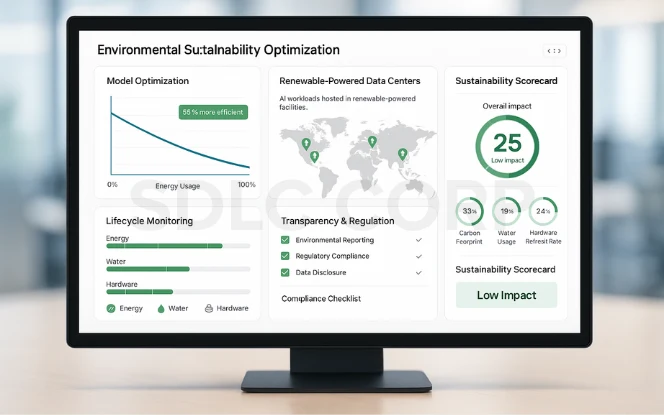
To ensure AI supports environmental goals without undermining them:
- Model Optimization – Use smaller, more efficient models without sacrificing accuracy.
- Renewable-Powered Data Centers – Host AI workloads on clean-energy infrastructure.
- Lifecycle Monitoring – Track and disclose energy, water, and hardware use throughout AI operations.
- Transparency and Regulation – Mandate environmental impact reporting for AI projects.
Policy and Ethical Considerations
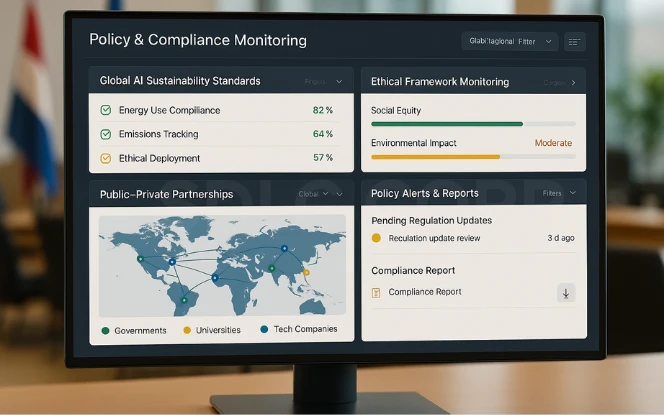
Governments and international bodies are starting to address AI’s environmental implications:
- Global AI Sustainability Standards – Guidelines for energy use, emissions tracking, and ethical deployment.
- Public–Private Partnerships – Collaboration between governments, academia, and tech companies to develop eco-friendly AI systems.
- Ethical Frameworks – Ensuring AI use does not exacerbate environmental inequality or harm vulnerable communities.
Environmental planning often requires reviewing long-term data trends and regulatory documents. Generative AI can help consolidate research findings, summarise impact assessments, and support policy analysis. In this context, a Generative AI consulting company may assist organisations in evaluating appropriate use cases, managing uncertainty, and setting governance standards for responsible AI use.
Real-World Case Studies
Methane Emission Detection – Kayrros, a climate tech company, developed a generative AI model that identifies methane leaks from satellite imagery. This enables regulators to respond faster to greenhouse gas emissions.
Wildfire Prediction in California – Researchers are using GAN-based simulations to predict wildfire spread under various climate conditions, improving evacuation and containment strategies.
Ocean Health Monitoring – Generative AI models analyze satellite and sonar data to monitor marine pollution, coral reef health, and fish stocks, aiding conservation policy.
Future Outlook
Generative AI’s potential will grow as models become more efficient and integrated:
- Hybrid AI-Human Systems – Combining computational insights with expert judgment.
- Citizen Science Integration – Leveraging public contributions to enhance training data.
- Climate Finance and ESG Reporting – Using AI to verify environmental claims and ensure accountability.
Integration with Environmental Data Platforms
Generative AI tools typically operate alongside geographic information systems, analytics platforms, and monitoring dashboards. Integrating these tools requires stable infrastructure and reliable data flows. Environmental agencies and organisations may rely on AI development services to connect generative models with existing platforms while preserving data accuracy and operational continuity.
Conclusion
Generative AI offers a new toolkit for environmental management, capable of creating realistic scenarios, filling data gaps, and informing policy decisions. Its benefits are significant: improved foresight, better allocation of resources, and faster response to environmental threats.
Yet, these come with costs in energy, water, and hardware use that must be addressed through efficiency, renewable energy, and transparent governance. Organizations looking to implement these solutions may choose to hire generative AI developers to design systems that balance innovation with sustainability. If deployed responsibly, generative AI can become an essential ally in building a sustainable future, helping humanity manage natural resources wisely while adapting to a changing planet.
Related Blogs You Should Explore:
FAQ's
What is generative AI in environmental management?
Generative AI uses advanced algorithms to create realistic environmental scenarios, fill data gaps, and support decision-making for sustainability efforts.
How can generative AI help address climate change?
It can model future climate scenarios, optimize resource allocation, predict disaster impacts, and provide early warnings to reduce environmental risks.
What are the environmental costs of using generative AI?
Training large AI models can consume significant energy, water, and hardware resources, contributing to carbon emissions, water stress, and e-waste.
How can we reduce the environmental footprint of AI systems?
Efficiency-focused model design, renewable-powered data centers, lifecycle monitoring, and transparent impact reporting can help reduce AI’s footprint.
Why is policy important in sustainable AI adoption?
Policies ensure AI is developed and used responsibly by setting sustainability standards, encouraging eco-friendly infrastructure, and preventing negative social impacts.
When should organizations hire generative AI developers for environmental projects?
Organizations should hire generative AI developers when they need custom solutions for monitoring ecosystems, predicting environmental risks, and integrating sustainability practices into AI workflows.

